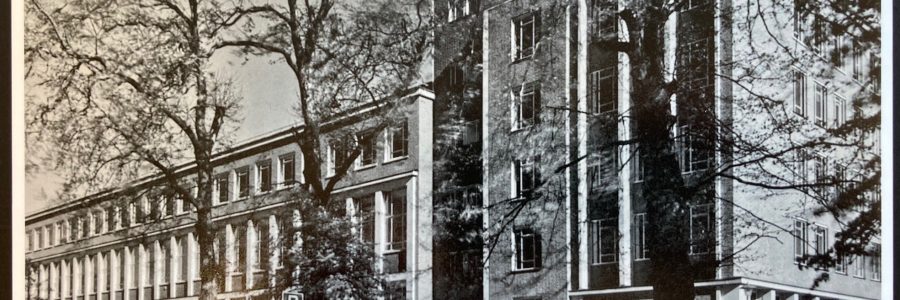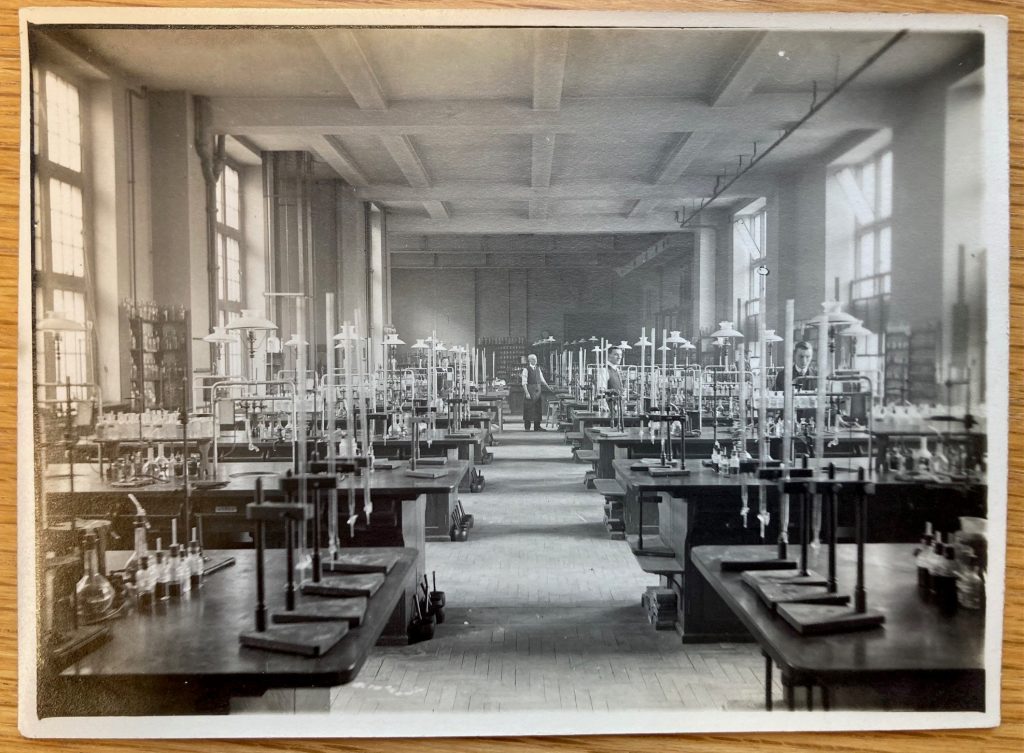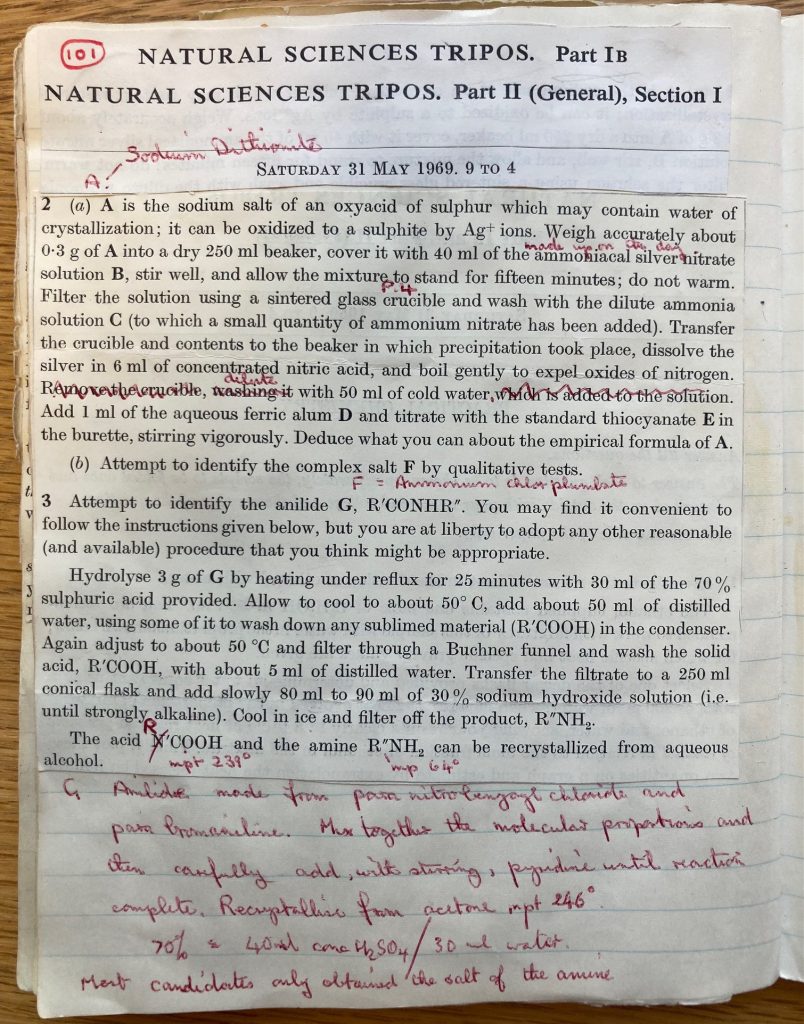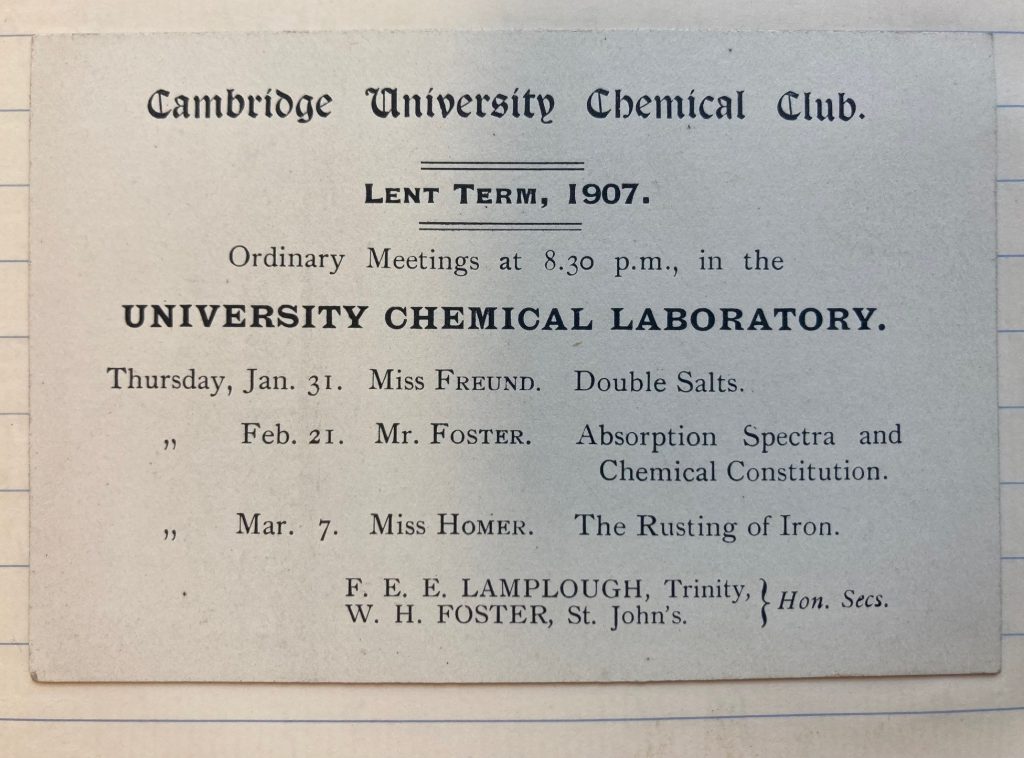
‘The Central Science’: records of the Chemistry Department added to the University Archives
A knowledge of molecular structures and properties is crucial in our understanding of large parts of science, from semiconductors to proteins and from the composition of interstellar clouds to the human genome.
Now records from the department, assembled over the past 20 years but telling the story of Cambridge Chemistry, in all its branches, from the early eighteenth century onwards, are catalogued and available to researchers in the Manuscripts Reading Room at the University Library.

The University created a Chair of Chemistry for Giovanni Francisco Vigani (ca 1650-1712) in 1702. Successive professors lectured and demonstrated before the University, but formal study of the subject at undergraduate level did not enter the curriculum until the establishment of the Natural Sciences Tripos in 1851.
The professor was given an official lecture room, shared with the Professor of Anatomy, in the newly vacated printing house on Queens’ Lane between 1716 and 1786. In that year he moved into a new building in the Botanic Garden, shared with the Jacksonian Professor of Natural (Experimental) Philosophy and the Professor of Botany. The site of the Botanic Garden was steadily developed from the mid-nineteenth century onwards as the ‘New Museums site’ for the study of sciences of all kinds. A purpose-built Chemistry laboratory fronting Free School Lane, Downing Street and Pembroke Street was completed in 1888 and twice extended in the 1920s. In 1958, the Department moved to new, spacious accommodation on Lensfield Road.
In 2001, it was decided that the upcoming 300th anniversary of the 1702 chair offered an opportunity for both a celebratory historical symposium and the identification of source material for departmental history. Dr Chris Haley, departmental archivist/historian 2001-3, was tasked with organising the symposium (called Chem@300) and editing the papers presented into a volume for publication, as well as tracking down archival records, researching biographies of chair holders, and approaching former staff and students for their memoirs. In the old projection room off lecture theatre 1, he assembled institutional records from current and former members of academic and administrative staff and students, alongside written and oral memoirs. Departmental staff added to the records in the archive room in the years following Dr Haley’s departure. In 2023, University Library archives staff began the work of appraising and packing material for transfer to the University Archives.

Given the upheaval of the laboratory move in the 1950s, the archives survive in greater quantity for the years after World War II than before.
The old laboratories had been dimly lit by gas lights, modern ground glass apparatus was limited and the open experimentation space enforced the sharing of acidic and alkaline fumes with neighbours. Alexander Todd (1907-1997) made the provision of up to date facilities a precondition of his accepting the chair in 1944, optimistic that the Lensfield site on the south side of town, 500 yards from the Engineering Department, would be the core of a new science research quarter.

The archives are particularly rich in evidence of both the building, equipping and use of the new laboratories, and Chemistry teaching. For the former, there survive extensive series of building correspondence and plans, equipment manuals, correspondence concerning supplies, and photographs. For the latter, there are course outlines, problems and solutions, and demonstrators’ notebooks.

Not that the earlier decades are absent from the record. Photographs of staff and students in and out of the labs, of buildings and equipment date from 1899. The sharing of research among staff and graduate students is evident in the meetings records of the Chemical Club 1901-38. And among the project files of Dr Haley is a sequence of biographical files for holders of the Chair of Chemistry from Vigani onwards and other individuals significant in the field.

Aspects of departmental history are captured in personal memoir; for instance, Professor Norman Sheppard’s (d.2015) written account of the development of the Spectroscopy Service from the 1950s onwards and sound recordings of interviews conducted with, among others, organic chemist Dr Dan Brown (d.2010) who with Lord Todd determined definitively the chemical linkage in DNA and RNA. (The oral histories are currently unavailable to scholars while they are ingested into the Library’s digital preservation repository.)
The Department of Archives and Modern Manuscripts also includes the personal papers of chemists William Hyde Wollaston (1766-1828) (MS Add.7736), Ronald Norrish (1897-1978) (MS Add.8370) and John Wilfred Linnett (1913-1975) (MS Add.10215) and those of several biochemists, including Frederick Gowland Hopkins (1861-1947) (MS Add.7620) and Joseph Needham (1900-1995) (MS Needham).
Archives in the University Library are consulted in the Manuscripts Reading Room.
